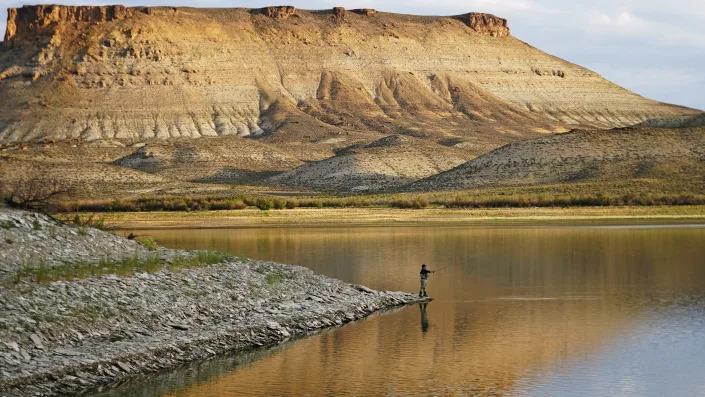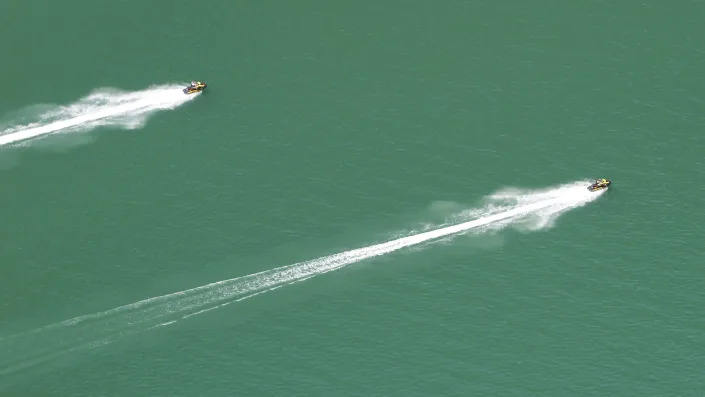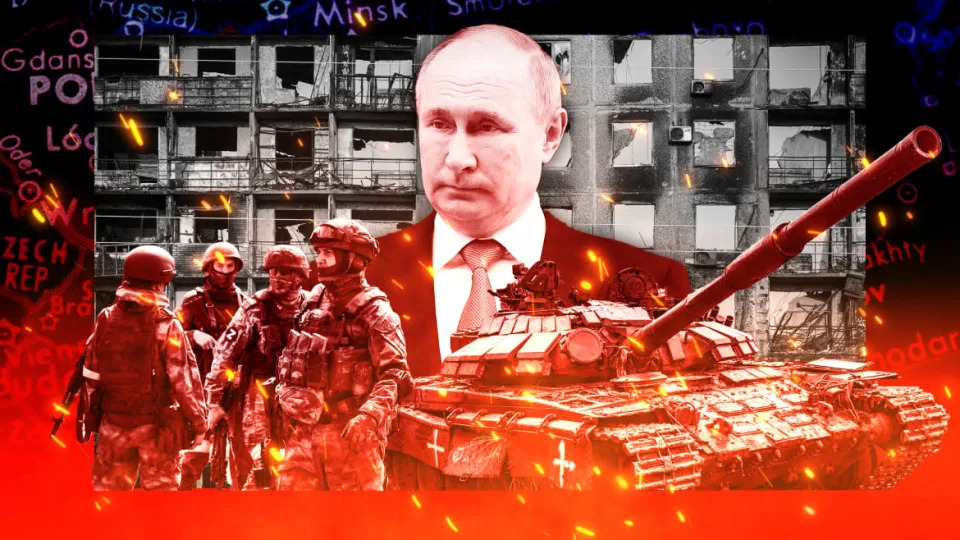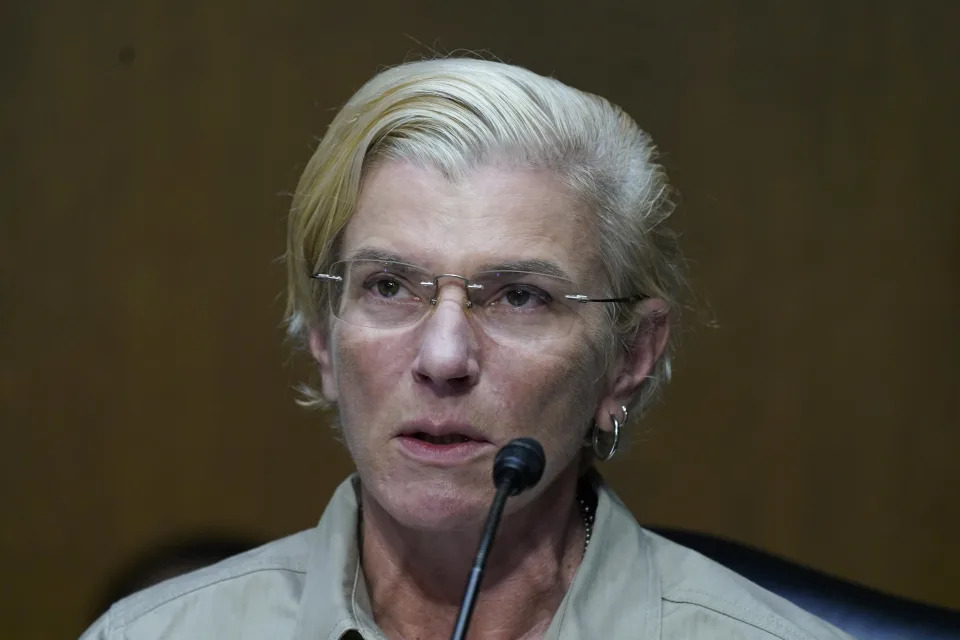Fox Weather
Largest Western wildfires burn mostly uncontrolled during above-average season
September 16, 2022

With more than 6.7 million acres in the U.S. engulfed by wildfires so far this year, the active fire season continues without much relief for Western states plagued by warm and dry weather that has driven explosive fire growth in recent weeks.
According to the National Interagency Fire Center, the U.S. is 116% above the 10-year average for 2022. Most of that uptick is attributed to the Alaska wildfires earlier this summer. Sufficient rainfall in Alaska over the last several weeks eliminated drought conditions for most of Alaska, improving fire weather overall. After 366 fires to date this year, there are no active wildfires in Alaska, according to the Alaska Wildland Fire database.
For California and much of the Northwest, a record heat wave and dry weather fueled significant wildfire growth in September. More than 140 wildfires greater than 100 acres are burning in the U.S., consuming 1.3 million acres. Nearly all the active fires are in the Northwest.
Smoke from Western wildfires continues to push east, even creating hazy skies as far as the Northeast on Friday.
Air quality in areas near the wildfires will be the poorest in the early hours of the day.
“So many people in the Tahoe area love to hike, they love to be out on the lake and so those activities, honestly, just can’t happen safely for the entire day,” FOX Weather meteorologist Britta Merwin said. “The time frame that you want to avoid is the morning, so we’ve had some stable air move in overnight, and with that stable air it literally traps that smoke down to the ground, and you’re going to breathe that in as you head out for that morning walk.”
As daylight heats the air, it should mix up, and air quality could improve later in the day.
Very unhealthy air quality alerts are in place for areas outside California’s Mosquito Fire in the Tahoe National Forest, including Carson City and Reno in Nevada. Unhealthy air quality extends east to Lovelock.
Hazardous air quality levels above 301 were recorded in Nevada County, California, on Friday.
Now at more than 69,900 acres, the Mosquito Fire continues to burn in the Tahoe National Forest and, until recently, was out of control. Firefighters have gained ground on the explosive fire with 20% containment as of Friday.
The fire began on Sept. 6, and the cause of the fire remains under investigation.
A front is expected to bring rain and increased winds to the fire area beginning Saturday and into next week.
Earlier in the week, strong southwesterly winds caused the fire behavior to increase, and critically dry fuels drove rapid fire growth toward Foresthill Road, according to CAL Fire.
Nearly 12,000 people have been forced to evacuate as evacuation orders remain in place for areas in Placer and El Dorado counties. According to the Placer County Sheriff’s Office, the fire continues to threaten more than 9,000 homes. The Mosquito Fire has destroyed at least 70 structures and damaged 10 others.
HEAT WAVES SAPPING SOIL OF MOISTURE, INCREASING WILDFIRE DANGER, SCIENTISTS SAY
The wildfire continues to send waves of smoke into neighboring states, creating air that is unhealthy to breathe. The school district that includes Reno, Nevada, canceled classes on Wednesday due to poor air quality from wildfire smoke.
According to the Washoe County School District, when a majority of the air quality sensors reach hazardous levels, district officials will work with the National Weather Service to determine if classes will be canceled.
CAL Fire and the U.S. Forest Service have reported more than 6,200 fires have burned over 316,000 acres in the Golden State this year.
Numerous wildfires across Washington and Oregon are blanketing the region in smoke and unhealthy air conditions. Air Quality Alerts are in place for parts of Oregon, Washington and Idaho on Friday due to ongoing wildfires.
More than 2,300 firefighting personnel are working to contain the now more than 93,000-acre Cedar Creek Fire in Oregon’s Willamette National Forest, which remains uncontrolled.
Most of the flames are burning inside the National Forest, but private lands are threatened in the western part of the state. An estimated 1,900 homes have been put under some type of evacuation notice as the blaze is out of control.
August lightning is believed to be the cause of the fire. The U.S. Forest Service said about 20 to 30 new fires started because of the storms.
Oregon Gov. Kate Brown declared an emergency last Friday to help mobilize resources for the fire burning in Lane County.
“The Cedar Creek Fire grew rapidly towards Oregon communities this morning, and the fire’s growth potential in the coming days is troubling, requiring additional resources to battle the fire and support the state’s response,” Brown said in a statement.
Also in Oregon is the Double Creek Fire, the Pacific Northwest’s largest fire of the year. As of the latest update, the fire has consumed more than 157,000 acres in eastern Oregon along the Snake River. On Sunday morning alone, the fire grew to more than 42,800 acres. The fire is more than 20% contained.
Officials said that between 100 and 200 homes are threatened, and the fire is burning close to the community of Imnaha.
Like the Cedar Creek Fire, August thunderstorms that produced lightning are blamed for starting the Double Creek Fire.
In Washington state, the Boulder Mountain Fire has been burning in the northeastern corner since late August after being sparked by lightning.
Because of the rural nature of the fire, only 24 structures are threatened, but crews have had some success in controlling the wildfire.
More than 2,300 acres have burned, and official containment has improved to about 60%.
A mixture of state, federal and private land is being impacted, and firefighters have reported difficulty working the fire because of the terrain and heavy timber.
While rain was forecast for earlier in the week in the Cusick, Washington, area, Northeast Washington Fire officials said it would be welcome but only provide momentary aid to firefighting efforts.
“While rain is always welcome, it will provide only a temporary relief to fire behavior until a significant event occurs due to the dry heavy fuels. A wind shift from the southwest has the potential to reduce the potential for spotting on the southern edge of the fire,” fire officials wrote.
Burnin about 37 miles east of Seattle, the Bolt Creek Fire is threatening hundreds of homes and has burned more than 9,400 acres.
According to the Washington State Department of National Resources, firefighters have 5% of the blaze contained.
Evacuations have been ordered around the town of Skykomish by the King County Sheriff’s Office.
First responders said the fire threatened at least 300 homes.
So far, there’s no word on what sparked the initial flames.
Much-needed rainfall has moved over one of the Northwest’s largest wildfires, allowing firefighters to make progress in containing the Moose Fire.
The Moose Fire started north of Salmon, Idaho, and has now burned more than 130,000 acres. It’s one of six new wildfires that sparked in the Salmon-Challis National Forest this week, according to forestry officials.
National Forest officials report the fire area recorded about a quarter to half an inch of rain early in the week.
Cooler temperatures, increased humidity and chances of rain are in the forecast for the weekend. That cooling trend will continue into next week.
About 850 firefighting personnel have gained 50% containment on the Moose Fire as of the last update.


 Scroll back up to restore default view.
Scroll back up to restore default view.





 US Ukraine Hero MedicUkrainian medic Yuliia Paievska, known to Ukrainians by the nickname Taira, speaks during an appearance before U.S. lawmakers on the Helsinki Commission, Thursday, Sept. 15, 2022 on Capitol Hill in Washington. (AP Photo/Mariam Zuhaib)
US Ukraine Hero MedicUkrainian medic Yuliia Paievska, known to Ukrainians by the nickname Taira, speaks during an appearance before U.S. lawmakers on the Helsinki Commission, Thursday, Sept. 15, 2022 on Capitol Hill in Washington. (AP Photo/Mariam Zuhaib)